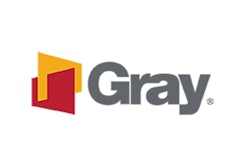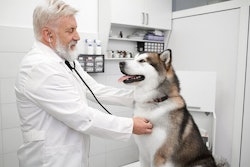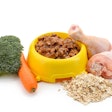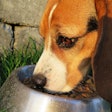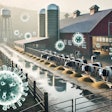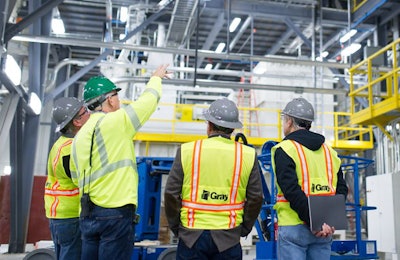
Pet food safety is a key topic among pet food suppliers and manufacturers, for obvious reasons. But food safety isn’t just about individual ingredients or the end products themselves; it’s also (perhaps especially) about the environment that surrounds said ingredients or products. To that end, experts in various aspects of facility safety gave their opinions and advice on how to ensure your facility is not only compliant with any relevant regulations, but actively contributes to the top-quality business you want to provide to your customers.
1. Construction: focusing on safety from the ground up
Food safety should be a consideration even before your facility exists, and designing your building with that in mind will not only set you up for success immediately, it could save you a lot of trouble down the road.

The construction of a facility has its own inherent safety risks, and pet food facilities in particular have intricacies that warrant plenty of discussion as the plan is being created. | Photo courtesy Gray Construction
“Since food facilities are unique, from a food safety perspective, the first step is to clearly understand the operations process(es) for the products to be produced,” said Greg Janzow, director of food safety at Gray Construction, a design-build company that specializes in engineering, architecture and construction services. Some key considerations that build on that understanding include:
- traffic flow – to prevent/minimize the opportunity for cross contamination
- sanitary design – the cleanability of key operations areas, as well as the materials selected to facilitate keeping clean
- hygienic zoning – air filtration/pressurization such as temperature/humidity controls
- ingredient storage – considerations that may be needed for allergens or other needs requiring separate storage and handling
Another important aspect to consider is potential future growth. “Be it new products or additional capacity, the same food safety considerations as above need to be applied,” said Janzow. This is particularly important, as being able to think ahead before things get started can prevent delays and backtracking once construction begins.
“Sometimes the customer doesn’t always have a good understanding about what they want their building to function like, so there are always changes during the course of construction,” said Bill Carey, director of safety at Gray. “And any time you have to go back and start changing things in the middle of the process, it can make safety a little more difficult. When we start to get into rework, the chances of an incident occurring go up because it wasn’t necessarily planned for.”
2. Sanitation: considering all the angles
Planning for the future isn’t just a good idea for new construction — it can save a lot of headaches later, when you realize you need bigger, better machinery … but don’t have the space for it without a physical expansion of your existing building.
“The first challenge is, with an existing manufacturer, when they come to the realization that as their company is growing, they need an automated washing system and they struggle with space,” said Kevin Quinn, sales manager for Douglas Machines Corp., a manufacturer of automated washing and sanitizing equipment specializing in the pet food, nutraceutical and food distribution industries. “With existing facilities, oftentimes the first piece of advice we share with a customer comes too late in the process. We see time and again a well-planned manufacturing facility that’s designed for the addition of production lines at some point to increase the amount of product being manufactured, but little attention was spent to the space required to automate the cleaning/sanitizing procedures.”
There is a solution, one that Douglas implements often in these situations, but it’s not ideal: you can replace your full manual operation with smaller, partially automated solutions that suit the space you do have.
“We can accommodate a customer who has an existing facility with limited space to an extent,” said Quinn. “Or, sometimes companies will build an expansion to accommodate new machinery, in which case they have the specifications of the new machines from the start and build to fit. Sometimes they just don’t have the space for the best machine, but at least they can upgrade to get something that does the job better than before.”
Fortunately, according to Quinn, more and more companies are turning an eye to sanitation from the start, something he attributes to the changing tides of industry priorities.
“I think the pet food industry as a whole is filled with a lot of sharp businesspeople who are proactive in this area,” said Quinn. “Not only in production and coming up with efficient equipment to process the product, but also looking at the food safety aspect at a very early stage. Up until maybe five years ago, we would promote our brand based on water savings, labor savings and consistent cleanliness and sanitation. But if you look at any of our ads in the last couple of years, every one at the top says, ‘When food safety counts.’ Food safety is an immediate ROI factor. People used to look at automating because they wanted to save on labor first, then water and detergent consumption. All these factors are important, but people come to us now in an effort to prevent a food safety issue such as a recall. Food safety has become the primary factor for considering a washing system, and then all the other factors follow suit.”
3. Fire risk: top dangers and the importance of planning ahead
Prevention is a common theme when speaking to safety experts, for multiple reasons.
“Prevention is less costly, less destructive and less harmful than mitigation of a fire or explosion,” said Terry Franklin, regional sales manager for supplier in the development and manufacturing of fire prevention solutions Fagus GreCon Inc. When it comes to fire prevention, at least, keeping track of the basics can make a significant difference in reducing potential catastrophe. Some of the most commonly overlooked hazards are neglected maintenance and fugitive dust, according to Franklin.
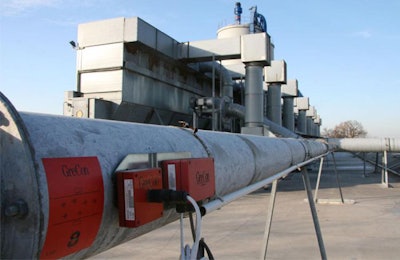
Spark detection is one way facilities can monitor their machines to ensure fire risks remain under control. | Photo courtesy Fagus GreCon Inc.
“Each facility has one or more processes that no one wants to maintain. Clean, test, adjust and lube equipment in accordance with manufactures instructions.” As for dust, “if there is dust acclimating somewhere, there is a leak in your process,” he said. “Find it and fix it. This condition, if not remedied, is a dust explosion waiting to happen. If you have more than one leak there is a potential for multi-explosion events.”
One of the top dangers of fire risk is also one of the most overlooked — dust, which if combustible can lead to explosions — and the other involves overheated equipment.
“Fires can happen inside or outside equipment when they’re overheated,” said Franklin. Fortunately, spark detection and extinguishing systems can help mitigate this particular hazard. “Dryers, hammer mills and pelletizes produce sparks and embers in the manufacturing process,” he said. “Conveying systems move these hazards downstream where they can create a fire or dust explosion. Spark detection system can eliminate the ignition sources before they cause a fire or explosion in silos, filters or downstream processes.”
Franklin’s overall advice for evaluating fire safety in your facility works for all aspects of food safety in the pet food industry: read and make sure you understand all the relevant regulations. And, “failing that, find a consultant who can assist you.”



